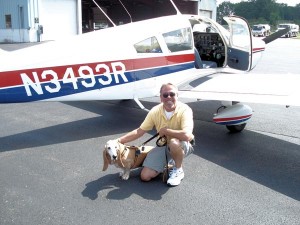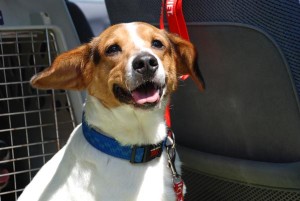Dog Is My Co-pilot
Debi Boies had finally found the perfect Doberman. Unfortunately, the rescue dog was in Florida, and Boies couldn’t figure out an easy way to get him to her home in South Carolina. Based on her experience with a Doberman rescue group, she knew the animal would have to be transported by car, chang…
When Boies’ friend and pilot Jon Wehrenberg heard of her dilemma, he offered to retrieve the Doberman in his Cessna 210. One rescue, and Wehrenberg was hooked. “Pilots are just looking for a good reason to fly, and some of them are bored going out for that $100 hamburger that everybody talks about,” he said to Boies. “Let’s see if we can’t combine your rescue efforts and the pilots.” So the two joined forces and set up Pilots N Paws, a nonprofit organization that connects over-crowded animal shelters with pilots willing to transport the pets to less populated shelters.

The problem is regional, Boies explains. Most of the transport requests come from shelters in the South and the Southeast, where there are fewer spay-and-neuter programs, and a smaller number of pet owners taking advantage of these services. If these animals can get to another part of the country—such as the North or Northeast—they stand a better chance of surviving. “Believe it or not,” says Boies, “some areas really have a need for puppies.”Over the past 18 months, the organization has rescued more than 1,000 animals. The exact number is hard to determine, as Pilots N Paws acts as a facilitator for animal rescues, leaving the pilots and shelters to work out the details. Rescue groups and shelters post their requests on the organization’s Web site; if a pilot can assist, he or she contacts a shelter directly to arrange transport. Most of the rescues are straightforward, with just one or two transport legs, but as many as four pilots have worked together to transport animals from the South to Minnesota.
Passengers are what you would expect, mainly dogs and cats, although there’s the occasional request for a pot-bellied pig, baby chicks, various snakes, and monitor lizards.
The pilots donating their time are an altruistic bunch; many also volunteer with Angel Flight, an organization that transports patients to medical treatment free of charge; and the Life Flight Network (an air ambulance service); a few are in the Civil Air Patrol, the civilian auxiliary of the U.S. Air Force.
Take Nick O’Connell, who registered his services as a pilot after reading about the organization in AOPA magazine. Within a week of registering on the site, he helped ferry two chow puppies to a foster home in Virginia (“As soon as she saw them, she decided to keep them both,” he says of the puppies’ foster “mother”). O’Connell, who has transported more than 20 dogs so far in his Piper Cherokee, says his passengers are extremely well behaved. “I’ve not had one occasion where I’ve felt there was going to be a problem with the dog. They get in the plane and it’s almost like they know they’re heading for something better than what they had.”
“Make a flight, save a life,” says Boies. “That’s what it amounts to.”
As a special effort, during the week of September 12 through 20, 2009, Pilots N Paws hopes to transport 5,000 animals to safety. Visit the Pilots N Paws Web site to learn more.
